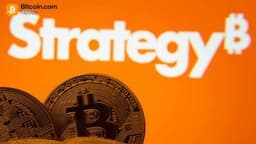Ripple and Key Investors Push Openeden Into Fast RWA Expansion
Openeden’s latest investment round signals accelerating demand for regulated tokenized assets as the company pushes deeper into on-chain financial products and expands its infrastructure for fast-growing RWA markets.

Strategy Says It Would Sell Bitcoin to Fund Dividend Payments If Needed
Strategy signaled it could tap its bitcoin stash to safeguard dividend payouts if its valuation sinks toward parity, exposing how market pressure may force the staunch accumulator to consider a rare sale to preserve investor confidence.

$11T Vanguard Lays out ‘What Investors Need to Know’ as Crypto ETF Doors Blast Open
Vanguard has published new guidance outlining what investors need to know about crypto exposure, pairing expanded access to third-party digital-asset funds with a push for clearer understanding of product structure, risks and how these holdings fit into broader portfolios.

Ripple Payments Accelerates XRP and Stablecoins Through NGN Lane
Ripple’s latest tie-up with Redotpay unlocks instant NGN payouts from XRP and stablecoins, extending fast digital-asset settlement to emerging-market users seeking quicker, cheaper cross-border liquidity.

Coinbase Launches Instant Unstaking as Demand for Yield Rises
Coinbase’s new instant-unstaking option promises faster access to locked crypto rewards, giving U.S. users fresh flexibility and liquidity while demand for yield-driven staking continues to intensify across major tokens.





